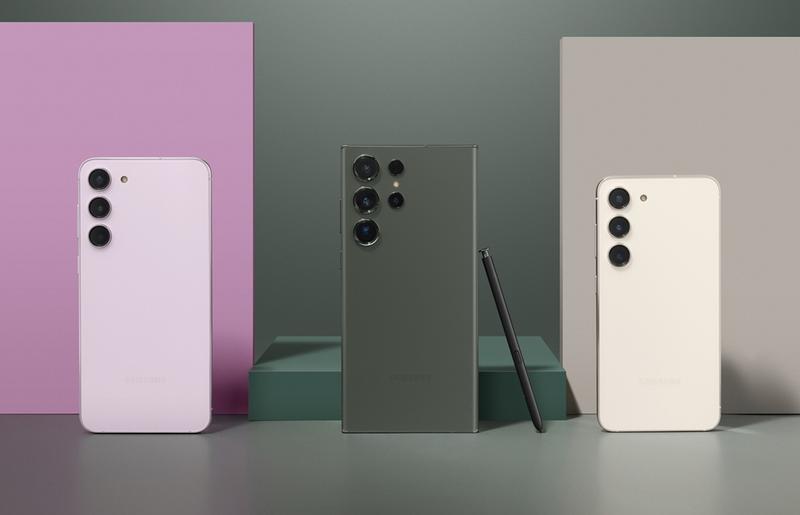After a long wait and an endless amount of speculations and rumors, Samsung has finally released the new Galaxy S23 lineup of flagship smartphones. Surprisingly or not, pretty much all of the rumors turned out to be true.
We’ll briefly cover all of the important changes that the new Samsung Galaxy S23 lineup brings without delving too much in the specsheets.
Let’s cut to the chase:
Snapdragon 8 Gen 2 on all three Galaxy S23 models
Yes, the Snapdragon 8 Gen 2 processor is present on all three Galaxy S23 variants: the standard S23, the S23 Plus, as well as the S23 Ultra. That’s perhaps the greatest news since we all want faster speeds for our smartphones.
The Snapdragon 8 Gen 2 is the best processor that’s available on Android phones at the moment, and that’s no exaggeration or joke. Geekbench 5 tests show that it can reach about 1,000 points more in the multi-core score compared to the Exynos 2200 processor that was present last year on the previous Samsung Galaxy S22. The tests also show that the Snapdragon 8 Gen 2 present on the Galaxy S23 lineup is just about as capable as the A16 Bionic chipset created by Apple for the iPhone 14 lineup that came out last year in September.
More durability
All Samsung Galaxy S23 versions are likely more durable than their predecessors from last year. Apart from the classical water and dust protection, the devices also feature Corning Gorilla Glass Victus 2 protection for their displays. This assures that the screens are safe against scratches and maybe even some minor bumps.
Otherwise, the displays of all three Samsung Galaxy S23 models are Dynamic AMOLED and feature refresh rates of 120Hz.
A 200MP camera for the S23 Ultra
The Samsung Galaxy S23 Ultra will likely take the best photos that any Samsung phone has ever been capable of, thanks to its 200MP main sensor.
All three models are also capable of recording videos up to 8K resolution. But moving back to the Ultra version, it needs to be said that additionally, the device features a 10 MP periscope telephoto lens with a f/4.9 aperture, 10x optical zoom, and Dual Pixel PDAF and OIS. There’s also a 10 MP telephoto lens with a f/2.4 aperture, 3x optical zoom, and Dual Pixel PDAF and OIS. Rounding out the main camera system is a 12 MP ultrawide lens with a f/2.2 aperture, 120° field of view, and Super Steady video. The camera is equipped with an LED flash, auto-HDR, and panorama capabilities. The device is capable of capturing 8K videos at 24/30fps, 4K at 30/60fps, and 1080p at 30/60/240fps, as well as 720p at 960fps with HDR10+ and stereo sound recording, thanks to the gyro-EIS.
The Galaxy S23 Ultra also features a 12 MP front-facing selfie camera with a f/2.2 wide lens and Dual Pixel PDAF, making it an ideal device for taking high-quality selfies. The camera is capable of dual video calling and capturing 4K videos at 30/60fps and 1080p at 30fps with Auto-HDR and HDR10+.
Prices start at $800
The new Samsung Galaxy S23 series is anything but cheap, but of course, that cannot possibly surprise anyone. The prices for the standard Galaxy S23 begin at € 949.00 / $ 799.99 / £ 849.00 / ₹ 74,999. The Plus variant can cost you at least € 1,199.00 / $ 999.99 / £ 1,049.00 / ₹ 94,999. If you want to buy the Ultra version, which is also the best phone of the series, you’ll need to invest a minimum of € 1,399.00 / $ 1,199.99 / £ 1,249.00 / C$ 1,649.98 / ₹ 124,999.
All Samsung Galaxy S23 phones come equipped with Android 13 out of the box and IP68-rated dust and water resistance. It’s clearly impossible at this point to ask for more, at least in these areas and when it comes to the processor.
The differences between Samsung Galaxy S23, S23 Plus, and S23 Ultra are clearly minor. They consist mostly of the battery power and display size.












Leave a Reply